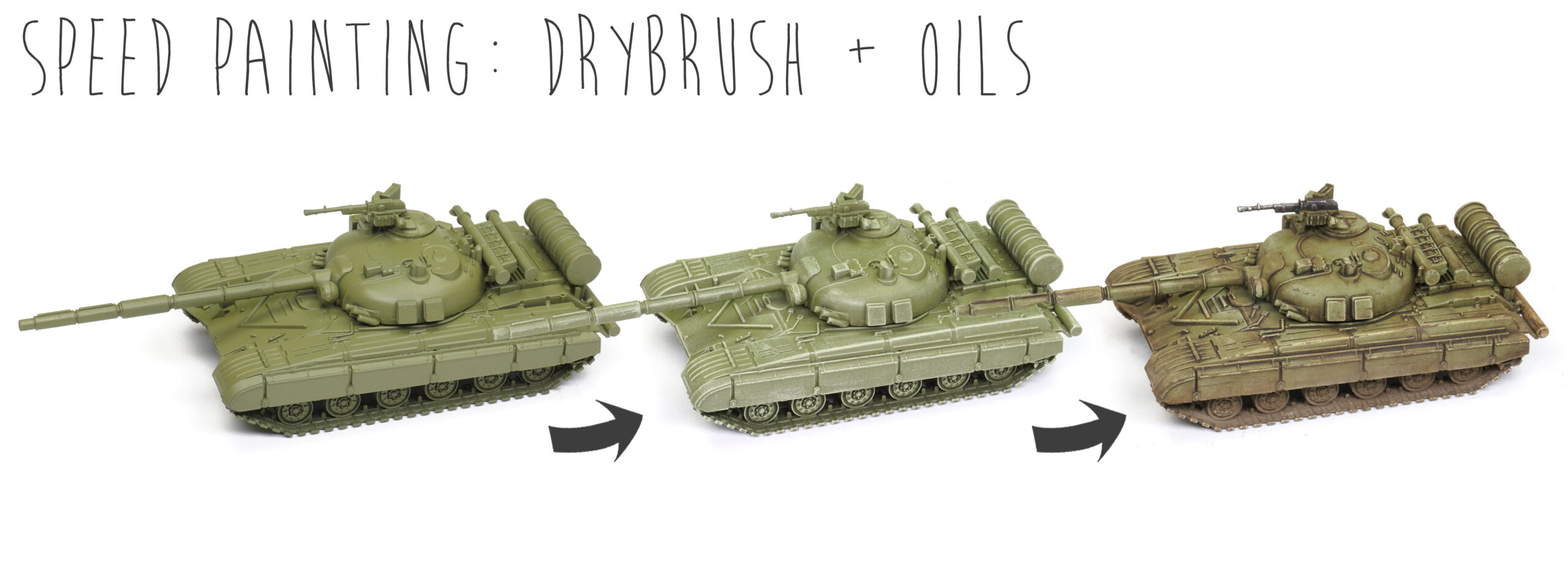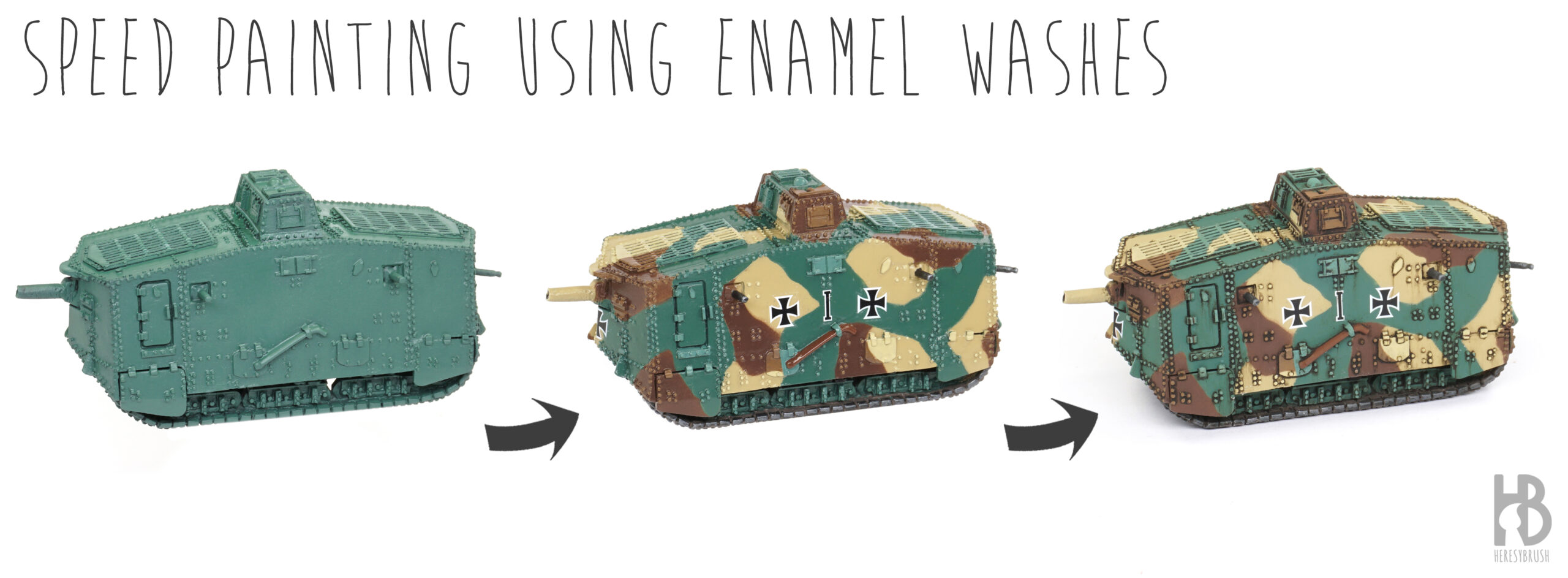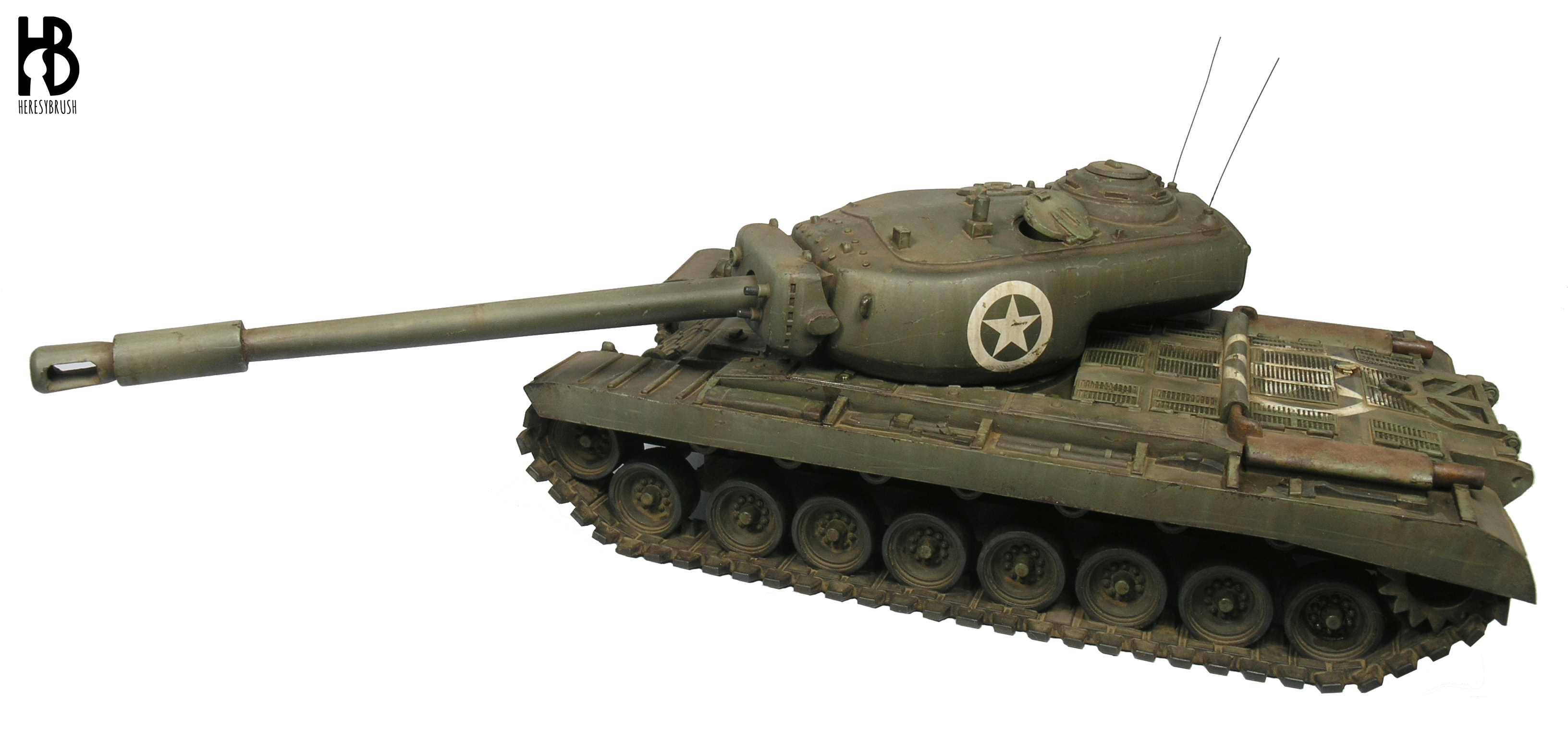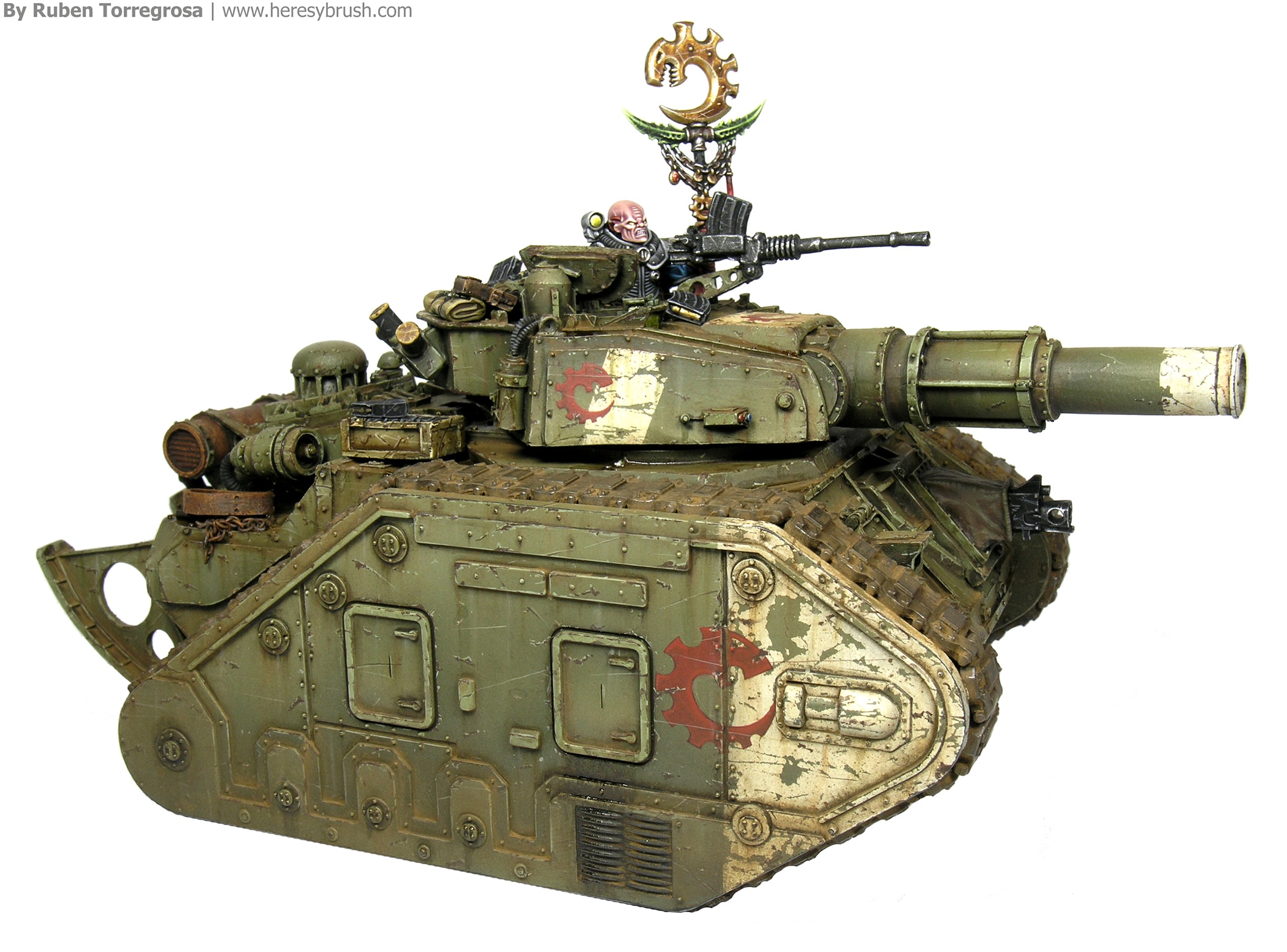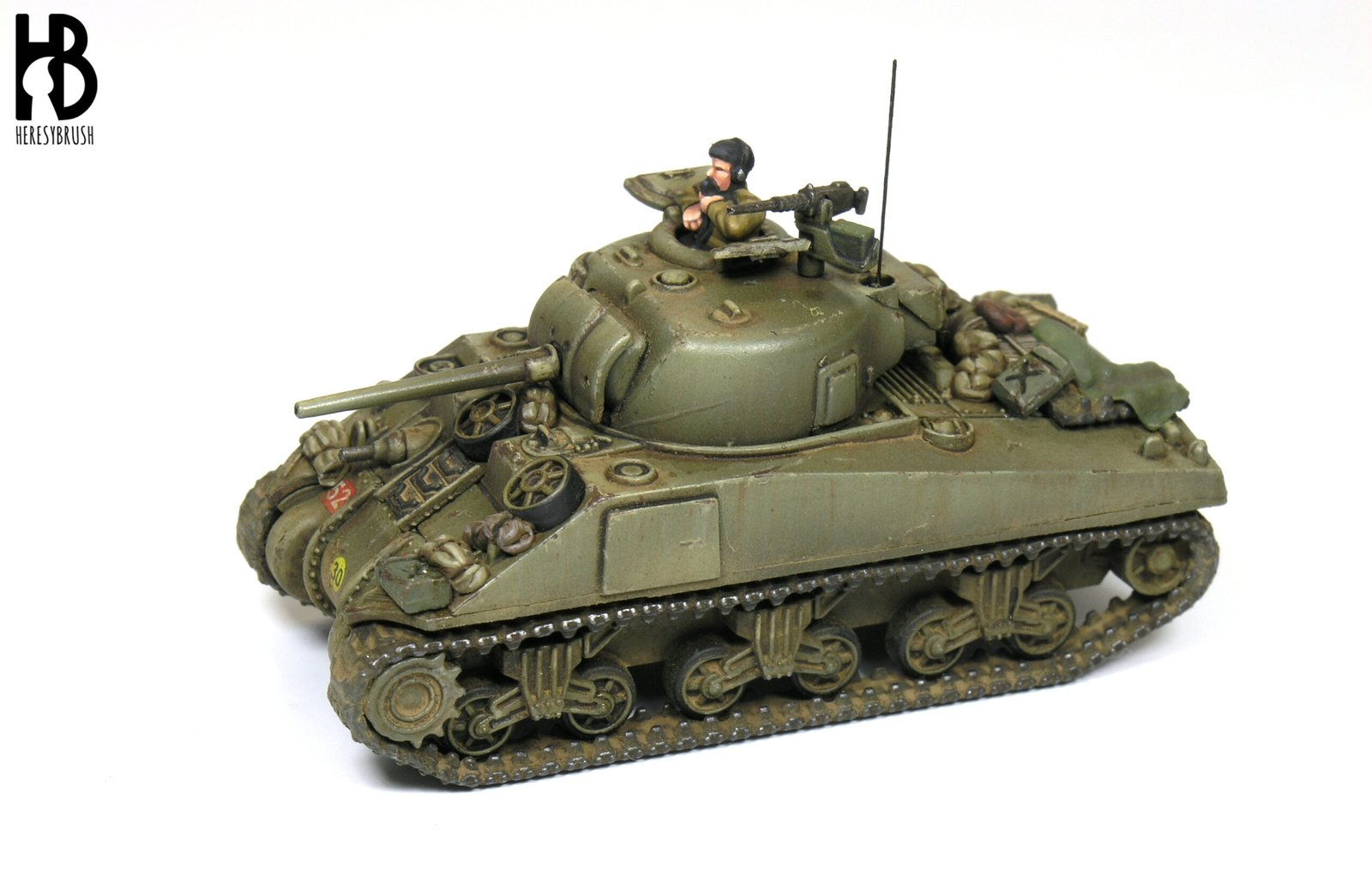In this tutorial, we will explore techniques for enhancing a basic paint job using oil paints. Unlike acrylics, oil paints require an organic solvent like White Spirit or turpentine (which is toxic, such as Enamel Odourless Thinner A.MIG-2019) instead of water; and take hours to dry, as opposed to mere seconds with acrylics. However, this extended drying time lends oils the advantage of effortless blending, allowing for the creation of multiple effects. For instance, we can employ this property to generate shadows, thereby enhancing the sense of volume, or to simulate various weathering effects such as dirt or dust accumulation.…
Painting the WWI German AV7 tank: the art of enamel washes
This tutorial was originally published on the Battlefront website, here. Acrylic paints are the most popular choice for wargamers, and in most cases, the only option on the painting bench. This preference is quite logical, as acrylic paints are readily available, non-toxic, quick-drying, and overall user-friendly. However, if we take a closer look at what Scale Modelers do, we will discover that they employ a variety of paint types, including acrylics, lacquers, oils, enamels, and powder pigments. The distinct features of each type of paint can be utilized to perform specific steps or achieve particular effects. Therefore, having a understanding…
How to paint 28mm tanks for Bolt Action
Today I bring something new to the table. Even though I have explained many times how to paint and apply weathering effects on 15mm vehicles (scale 1:100), I have never done it using a historical 28mm tank (1:48-1:56 scale); although I have explored previously bigger scales when painting Warhammer 40 000 vehicles (here and here). Taking advantage of a very nice resin model of an American heavy tank M34 from Khurasan Miniatures, I would like to give you some tips about how to paint your tanks for Bolt Action (or any other 28mm wargame), and specially to add a little…
Warhammer 40.000 tanks I
Today I wanted to share with you a painting guide for a Warhammer 40k tank, a Leman Russ for my Genestealer Cult. Ten years ago I gathered around twelve Imperial Guard tanks. I loved them, those enormous and powerful steel monsters. Especially the Forge World versions, more realistic (less toy-like) and charismatic. However, when I was younger I did not spend much time painting these tanks: just with a brush I tried to simulate a simple camo. And that was all. Lately, I could not help feeling gutted about this, since over the last years I have learnt a lot…
How to paint a British Sherman tank, and a new book: Painting Wargame Tanks
It’s a great pleasure to announce a new book published by AMMO of Mig Jimenez where I have actively been collaborating beside Mig Jimenez and Carlos Cuesta. The book contains 96 pages. After a short introduction about general materials and techniques (differences between acrylics and enamels, what is a filter or a wash, how to clean the airbrush…) you can find ten complete painting guides “step by step” of different tanks (mostly Germans, but there are also from USA and Soviet Union). The three firsts pretend to assimilate the knowledge showed in the introduction (we can say “basic level”), while…
